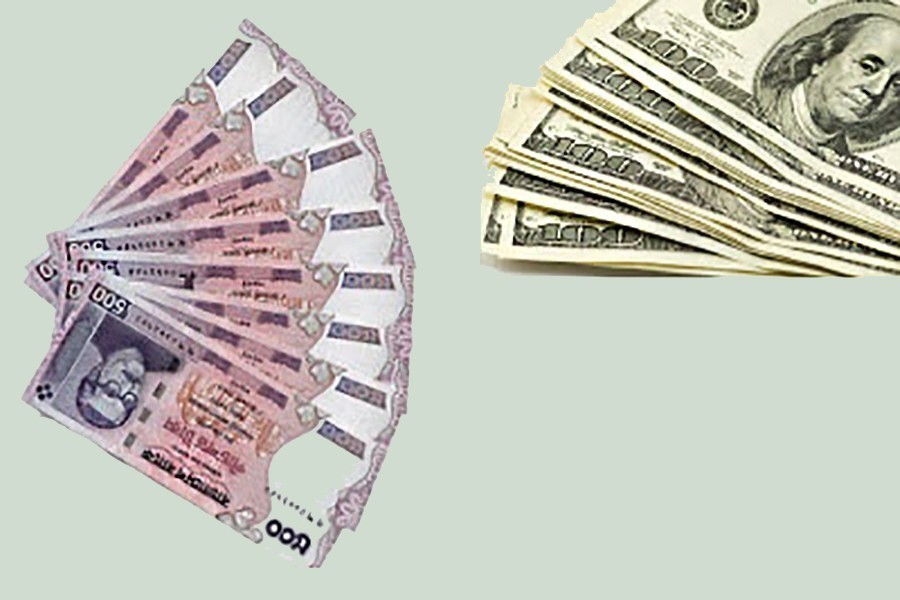
Published :
Updated :

As it stands today, One US dollar costs 92.93 Taka, whereas last September, it used to cost around 83 Taka. So in the past nine months, a significant devaluation has occurred for the Bangladeshi currency taka.
The scenario is not likely to take a big U-turn overnight. We all have our opinions and we expect that the government has some plans to make things better. But why is this happening and what actually determines the exchange rate of one currency for another?
Since the end of the gold standard in 1971, the majority of the world’s currency has adopted one of two exchange rate systems - Fixed exchange rate and floating exchange rate.
A fixed exchange rate is when one country pegs its currency to another currency so that both currencies move likewise. Usually developing countries seeking currency stability follow this system.
A floating rate is determined by the open market through supply and demand on global currency markets. Therefore, if the demand for the currency is high, the value will increase and vice versa.
In the recent past, a fixed exchange rate system was prevailing in Bangladesh. To enhance the resilience of the economy, Bangladesh shifted to a market-based exchange rate for the Taka in May 2003 known as the ‘managed float’ system.
A currency's strength is determined by different factors such as the demand and supply of it in the foreign exchange markets, inflation, growth in the domestic economy, interest rates, capital flow, etc.
Central banks often buy or sell domestic currencies to stabilise the exchange rate. By buying foreign and selling domestic currencies, they make domestic currencies cheaper and vice versa.
With high inflation, the power of purchasing decreases, and the value of currency drops. For example, if Indian prices grow faster, demands for Indian goods fall and there is less demand for Rupee.
If a country spends more on foreign trade than it’s earning, and tries to make up the deficit by borrowing from other countries, the investors are likely to withdraw the investments and the value of the local currency will drop.
Again, if the government of a country is under huge debt, it causes the rise of inflation which eventually leads to the removal of investments and devaluation of the currency.
Now let’s have a look at the present economy of our country. Bangladesh is growing its trade deficit sharply due to the increasing value of imports compared to the exports on the back of spiralling global prices of goods due to the pandemic and the Russia-Ukraine war.
At present, the trade deficit is more than USD27 billion. This huge number has also caused the current account balance of foreign transactions to plunge to more than USD15 billion.
To make the situation worse, remittances have declined by a large scale in this fiscal year. The central bank has released about 6 billion of its reserve to avoid a crisis.
Thus, the foreign reserves hit the lowest in 18 months i.e about 42 billion. By international standards, a country must have at least three months' worth of foreign exchange reserves to cover import costs and Bangladesh only has five months of reserve left for imports.
Moreover, the devaluation of the taka means prices of imported goods will rise, which will eventually cause inflation to increase. So the coming days are likely to be more dreadful for our economy.
tahnaf29@gmail.com


 For all latest news, follow The Financial Express Google News channel.
For all latest news, follow The Financial Express Google News channel.